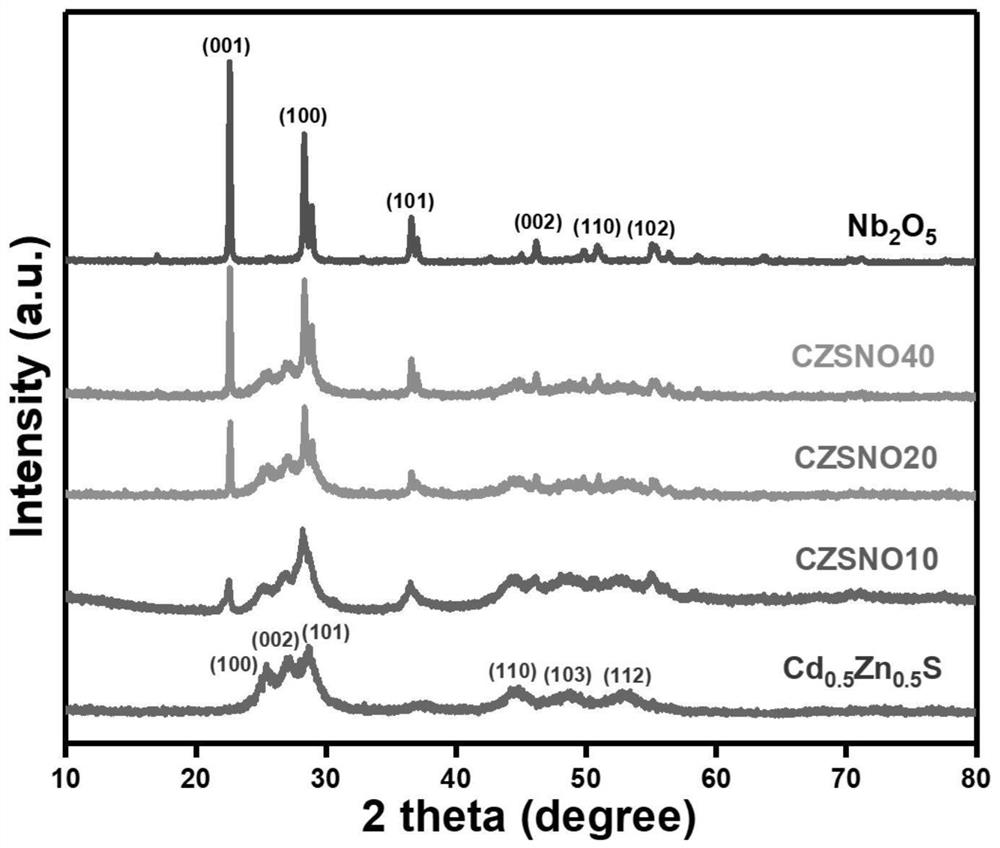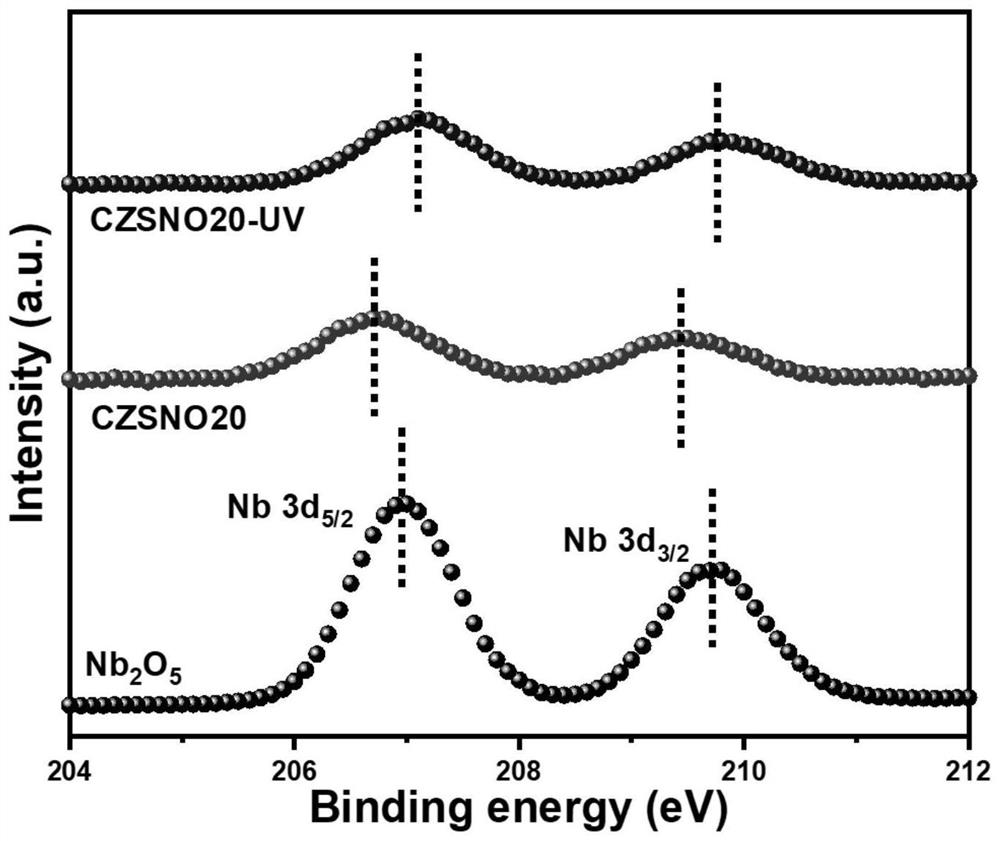Preparation method and application of cadmium zinc sulfide/mesoscopic niobium pentoxide S-type heterojunction fiber photocatalyst
A niobium pentoxide and photocatalyst technology, applied in the field of photocatalysis, can solve the problems of high cost of antibiotics and low efficiency of niobium pentoxide catalyst, and achieve strong light absorption capacity, superior photocatalytic performance, and high carrier separation efficiency effect
- Summary
- Abstract
- Description
- Claims
- Application Information
AI Technical Summary
Problems solved by technology
Method used
Image
Examples
Embodiment 1
[0041] A cadmium zinc sulfide / mesoscopic niobium pentoxide S-type heterojunction fiber photocatalyst, the cadmium zinc sulfide / mesoscopic niobium pentoxide S-type heterojunction is composed of the (001) diffraction crystal plane of mesoscopic niobium pentoxide, The (002) diffraction crystal plane of cadmium zinc sulfide is formed; cadmium zinc sulfide is uniformly attached to the surface of mesoscopic niobium pentoxide, forming a close-contact heterojunction structure.
[0042] The preparation method of cadmium zinc sulfide / mesoscopic niobium pentoxide S-type heterojunction fiber photocatalyst, the specific steps are as follows:
[0043] Preparation of cadmium zinc sulfide:
[0044] A1, dissolve 0.44g of zinc acetate in a mixed solution of 20mL of ultrapure water and 50mL of ethylenediamine, and hydrothermally react at 160°C for 20h to obtain a white powder;
[0045] A2: Disperse the white powder in A1 into 60 mL of ethylene glycol, dissolve 0.0839 g of cadmium chloride in th...
Embodiment 2
[0056] The difference between this example and Example 1 is that the yellow powder obtained in A2 and the mesoscopic niobium pentoxide obtained in B3 are mixed in a mass ratio of 80:20, marked as Cd 0.5 Zn 0.5 S / 20%Nb 2 O 5 .
Embodiment 3
[0058] The difference between this example and Example 1 is that the yellow powder obtained in A2 and the mesoscopic niobium pentoxide obtained in B3 are mixed in a mass ratio of 60:40, marked as Cd 0.5 Zn 0.5 S / 40%Nb 2 O 5 .
[0059] The present invention by changing the Cd 0.5 Zn 0.5 S and Nb 2 O 5 The photocatalysts with different mass ratios can be obtained. The in-situ X-ray photoelectron spectroscopy analysis proves that the composite photocatalyst is an S-type heterojunction fiber photocatalyst. For the above examples, cadmium sulfide Zinc is in the form of cadmium zinc sulfide nanosheets, and mesoscopic niobium pentoxide is in the form of mesoscopic niobium pentoxide nanofibers. The photocatalytic performance test results show that the photocatalyst can convert antibiotic molecules in wastewater under visible light irradiation. Effective degradation, the efficiency is more than 90%, and the degradation rate is still more than 90% after five cycles, which proves ...
PUM
 Login to View More
Login to View More Abstract
Description
Claims
Application Information
 Login to View More
Login to View More - R&D
- Intellectual Property
- Life Sciences
- Materials
- Tech Scout
- Unparalleled Data Quality
- Higher Quality Content
- 60% Fewer Hallucinations
Browse by: Latest US Patents, China's latest patents, Technical Efficacy Thesaurus, Application Domain, Technology Topic, Popular Technical Reports.
© 2025 PatSnap. All rights reserved.Legal|Privacy policy|Modern Slavery Act Transparency Statement|Sitemap|About US| Contact US: help@patsnap.com



